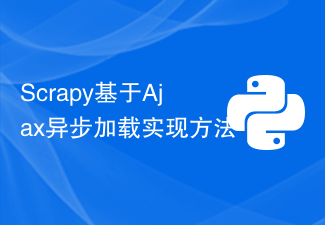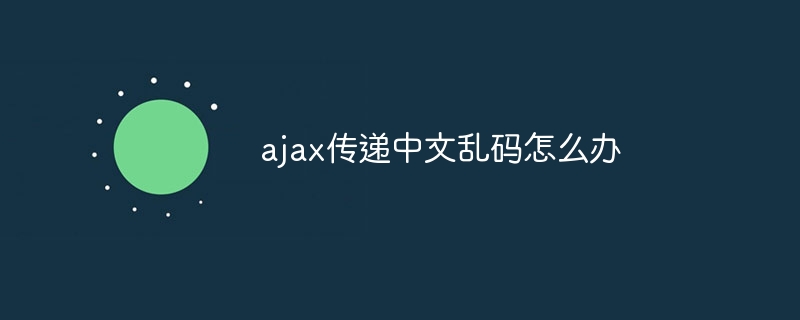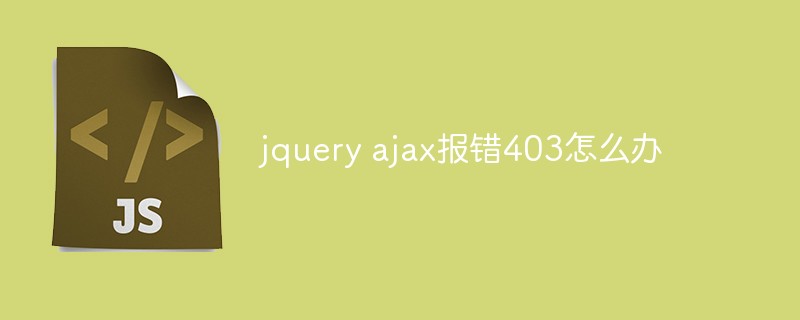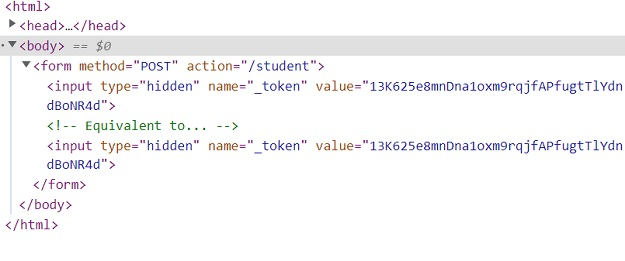This time I will bring you a brief history and basic usage of Ajax. What are the precautions to understand the brief history and usage of Ajax. Here are practical cases, let’s take a look.
Over the past few years, JavaScript has gone from being an incidental afterthought to being the most important language on the web. If there's one factor that has driven significant advancements in this technology, it's the emergence of Ajax-based application development.
Developing technologies on this topic
In short, Ajax is a development technology that supports a website or application using real-time data Update interface without page refresh. This feature creates a smoother and more desktop-like user experience.
A brief history of Ajax
The history of Ajax is similar to that of many other overnight successes. Although Ajax seems to have come out of nowhere, in fact, it has been around for a long time. Years of hard work have made it all over the web, creating tools and patterns under the Ajax banner. Throughout the DHTML days of the original dot-com bubble and the dark ages after dot-com bankruptcies, developers around the world unlocked the superpowers of JavaScript and brought this new and exciting application paradigm to the Web.
XMLHttpRequest
The earliest and most important Ajax puzzle is the XMLHttpRequest (XHR) API. XHR is a JavaScript API for transmitting data messages between web browsers and web servers. It supports browsers using HTTP POST (transmitting data to the server) or GET requests (accessing data from the backend server). This API is at the core of most Ajax interactions and is an essential technology in modern web development.
It is also the best gift the Microsoft® Internet Explorer® team has contributed to the Internet.
This is real. XHR first appeared in IE 5 back in 2000. Originally a Microsoft ® ActiveX ® control written by Alex Hopmann, XHR was created to work with Microsoft Outlook ® Web Access and was intended to address interactions between high-level (at the time) front-end interfaces and Microsoft Exchange Server.
Although Microsoft's software package is not exactly "from humble beginnings", XHR has evolved far beyond the scope of the original product, and has since been implemented in every major browser and even adopted as a W3C standard. .
Pioneer
In addition to Microsoft, there are some other companies that have begun to enter the field of prototype Ajax. Many businesses are experimenting with these technologies, but two in particular deserve mention -- one because it's an interesting and oft-cited footnote to Ajax development, and the other because it was the Internet giant that really democratized these technologies.
Oddpost
Oddpost is an advanced web-based email client launched in 2002. It utilizes many currently familiar patterns. In terms of design and interaction, desktop mail clients come to mind. Internally, Oddpost uses a concept the developers call DataPacks to transfer small chunks of data from the server to the browser. This will bring a new experience.
Oddpost was finally replaced by Yahoo! Acquired to become the basis for a revised version of Yahoo! Mail.
Google Maps, Google Suggest, Gmail, and an important article
The real changes started a few years later with Gmail, Google Suggest, and Google Maps service. The use of these three Ajax technologies has the web development world buzzing. Its responsiveness and interactivity are new to the public. The new Google app is quickly creating a buzz.
Although not many people know about it, the response from the web development community is very violent. At the time, people knew there was something new and exciting in web application development. But for a long time, this "content" was unclear.
What people need is an article that makes this clear.
On February 18, 2005, Jesse James Garrett, co-founder and president of Adaptive Path, wrote an article titled "Ajax: A New Approach to Web Applications." In this article, he describes trends in web application design and development, such as Gmail and Google Maps, which people use all the time. He calls the trend "potentially triggering fundamental changes in web development."
He also gave this pattern a name, which was an important moment because from this moment on people started focusing on this new trend and everyone (even non-experts) talked about the latest changes in the web development world. will all mention it. In this article, he introduces the technology of Ajax like this:
Definition of Ajax
Ajax is not a technology. It's actually several technologies, each with its own characteristics, that come together in new and powerful ways. Ajax includes:
Standards-based rendering using XHTML and CSS
Dynamic display and interaction using the Document Object Model
Data exchange and manipulation using XML and XSLT
Asynchronous data retrieval using XMLHttpRequest
Bind them to JavaScript together
Although this technical description is somewhat outdated, the basic pattern is still intact: HTML and CSS render data and styles, DOM and related method support Pages update in real time, XHR supports communication with the server, and JavaScript arranges the overall display.
The overall impact of this article is relatively large. It’s a rare occasion when intense hype collides with untapped creativity and energy to create a revolution. As Ajax is adopted by a new generation of startups around the world, it is rapidly moving to the forefront of the web development paradigm. Ajax has gone from being a vague trend seeking marketing strategies to becoming a critical component in the development of modern Web design.
Libraries
A key driver of Ajax-based development is the evolution and improvement of several full-featured JavaScript libraries. Apart from experienced JavaScript developers, few people truly understand the underlying technology of Ajax. So even in the days of DHTML, while most browser interactions and animations were worked out to deal with trivial overage, the demand and talent for Ajax-based sites (who could be written from scratch) was limited by the limited number of experienced JavaScript engineers. Such an interface) further widens the gap between supply. Libraries like Prototype, Dojo, and jQuery help fill this gap at scale by providing ready-to-use interactions and animations, reducing cross-browser differences, and improving implementation of core JavaScript API shortcomings.
Asynchronous JavaScript and more JavaScript (Object Notation)
The biggest change in the Ajax field from the original post era to modern times is the introduction of JSON, JSON is a JavaScript-based data transmission. Offering smaller file sizes and easier native JavaScript access (as opposed to the clunky DOM-based methods and properties used by XML), JSON was quickly adopted by developers for data transfer. JSON is now included in the recently completed version 5 of the ECMAScript specification.
JSON+Padding
One proposed significant enhancement to raw JSON is JSON+Padding (JSONP). As you can see, the XMLHttpRequest object has a strict security model and only supports communication using the same domain name and protocol as the requested page. JSONP creates a more flexible approach to this cross-domain restriction by wrapping the JSON response into a user-defined or system-provided callback function. This method will provide instant data access after adding the JSON script to the document. This pattern is now common, and for many larger web services the practice can be adopted to support mashups and other content syndication.
Despite its popularity, JSONP has an obvious vulnerability that can easily be exploited by malicious code. Because script tag injection from a third party allows all content to be run on the host page, the potential for malicious compromise is imaginable if the data provider is compromised, or if the host page is not aware of the resources inserted into the page.
Now that you know a little bit about the history of Ajax, we'll start exploring the techniques that make the magic a reality. Although, general JavaScript API books are widely available in libraries, understanding how the underlying workings are still instructive even for experienced developers.
XMLHttpRequest API and Features
Although other technologies can be used to return data from the server, XHR remains at the core of most Ajax interactions. XHR interactions consist of two parts: requests and responses. Below we will introduce them one by one.
Security Model
As mentioned above, the original XMLHttpRequest object has a strict security model. This same-origin policy only allows communication using the same host, protocol, and port as the requested page. This means different domains (example.com and example2.com), different hosts (my.example.com and www.example.com), different protocols (http://example.com and https://example.com) Communication between is prohibited, which will generate error messages.
With the development of the second version of the XHR object, the new cross-domain request protocol work will be completed in the W3C. A large amount of implementation work is completed by browser vendors. The mechanism for cross-domain requests is currently only available in Internet Explorer. 8+, Mozilla Firefox 3.5+, Apple Safari 4+, and Google Chrome. Although development has slowed down, a specific "Origin" header is still sent in the request:
Origin: http://example.com
and the server Configured to send back a matching "Access-Control-Allow-Origin" header:
Access-Control-Allow-Origin: :http://example.com
Now, you can use XHR objects for two-way communication across domains.
Request
The request side has 4 methods:
open() initiates a server connection . Can take parameters:
method. The HTTP method to be used (can be POST or GET)
url. Requested URL
async. Optional Boolean parameter indicating whether the request is asynchronous (the default value of this parameter is True)
user. An optional username for authentication using
password. An optional password for authentication
setRequestHeader() sets the request header, with two parameters: the header and its associated values
-
send() Sends a request. This method takes an optional parameter, containing the body of the POST request
abort() Abort the request
Response
The response also has several properties and methods :
- ##status. The standard HTTP status of the request (for example, a successful request will return 200)
- statusText. Includes the full response string returned by the web server, including the response text (for example, 304 Not Modified)
- getResponseHeader(). Returns specific header content; the request header name is its only parameter
- getAllResponseHeaders(). Returns the text
- responseText of all response headers. A string representation of the response text
- responseXML. XML representation of the response text, a document fragment containing the DOM and all related DOM methods
readyState
instantiation After completion, the XMLHttpRequest object has 5 states, represented by the following values:- 0: UNSENT. Indicates that the object has been created
- 1: OPENED. Indicates that the open() method has been successfully called
- 2: HEADERS_RECEIVED. Indicates that the header from the request was received
- 3: LOADING. Indicates that the response header has been downloaded
- 4: DONE. Indicates that the request was completed, but does not indicate whether the request was successful or return expected values (query the response and standard HTTP headers to gauge the health of the request)
A generic JavaScript Examples
Before we go further into popular libraries, let's go through a few raw JavaScript examples to understand the core technology in action. Sample HTML Documentnbsp;html> <meta> <title>Simple Ajax Example</title> <meta> <meta> <link> <p> </p><h1 id="Simple-Ajax-Example">Simple Ajax Example</h1> <p><strong>Click here</strong> and content will be appended after this paragraph</p> <script></script>The following example illustrates a simple GET request that will handle responseXML. This is a typical Ajax interaction from the early days of the technology. It works in all modern browsers as well as Internet Explorer 7 and 8.
A basic Ajax function
/*
Here's a basic Ajax function
*/
var ajax = function( opts ) {
/*
We have an options argument.
In addition, we want to have some smart defaults.
*/
opts = {
//Is it a Get or Post
type: opts.type || "POST",
//What URL are we going to hit?
url: opts.url || "",
//What do we do with the data
onSuccess: opts.onSuccess || function(){},
//what kind of data do we expect?
data: opts.data || "xml"
};
//create a new XMLHttpRequest
var xhr = new XMLHttpRequest();
//Open the connection to the server
xhr.open(opts.type, opts.url, true);
/*
When the ready state changes
fire this function
*/
xhr.onreadystatechange = function(){
//readyState 4 is "done"
if ( xhr.readyState == 4 ) {
/*
do some simple data processing
There are two components to the returned object-
responseXML and responseText.
Depending on what we're doing we'll need one or the other.
*/
switch (opts.data){
case "json":
//json is text
opts.onSuccess(xhr.responseText);
break;
case "xml":
//XML retains the structure/DOM
//It's passed in whole.
opts.onSuccess(xhr.responseXML);
break;
default :
//Everything else will get TXT
opts.onSuccess(xhr.responseText);;
}
}
};
//close the connection
xhr.send(null);
}
//here's our simple function
var ajaxSample = function(e){
//Simple callback adds some text to the page
var callback = function( data ) {
document.getElementById("main").innerHTML +=
"<p>"
+data.getElementsByTagName("data")[0].getAttribute("value")
+"</p>";
}
//And here's our Ajax call
ajax({
type: "GET",
url: "_assets/data/ajax-1.xml",
onSuccess: callback,
data : "xml"
})
//prevent the default action
e.preventDefault();
}
//Wire everything up
document.getElementById("activate").addEventListener("click", ajaxSample, false);
在下面的例子 中可以看到活动的原始 ActiveX 对象。如果没有本机实现,可以在不同版本的 Internet Explorer 中使用 Try... Catch 块来循环遍历对象的潜在引用。这个完整的跨浏览器实现与 Internet Explorer 是兼容的,甚至可以与古老的 Internet Explorer 5 兼容。
一个跨浏览器 Ajax 脚本
var ajax = function( opts ) {
opts = {
type: opts.type || "POST",
url: opts.url || "",
onSuccess: opts.onSuccess || function(){},
data: opts.data || "xml"
};
/*
Support for the original ActiveX object in older versions of Internet Explorer
This works all the way back to IE5.
*/
if ( typeof XMLHttpRequest == "undefined" ) {
XMLHttpRequest = function () {
try {
return new ActiveXObject("Msxml2.XMLHTTP.6.0");
}
catch (e) {}
try {
return new ActiveXObject("Msxml2.XMLHTTP.3.0");
}
catch (e) {}
try {
return new ActiveXObject("Msxml2.XMLHTTP");
}
catch (e) {}
throw new Error("No XMLHttpRequest.");
};
}
var xhr = new XMLHttpRequest();
xhr.open(opts.type, opts.url, true);
xhr.onreadystatechange = function(){
if ( xhr.readyState == 4 ) {
switch (opts.data){
case "json":
opts.onSuccess(xhr.responseText);
break;
case "xml":
opts.onSuccess(xhr.responseXML);
break;
default :
opts.onSuccess(xhr.responseText);;
}
}
};
xhr.send(null);
}
var ajaxSample = function(e){
var callback = function( data ) {
document.getElementById("main").innerHTML += "<p>"
+data.getElementsByTagName("data")[0].getAttribute("value")
+"</p>";
}
ajax({
type: "GET",
url: "_assets/data/ajax-1.xml",
onSuccess: callback,
data: "xml"
})
e.preventDefault();
}
document.getElementById("activate").addEventListener("click", ajaxSample, false);
下面展示了现今更为常见的模式:采用 JSON 格式的 responseText,并将其解析成本机的 JavaScript 对象。这段代码演示了一个较为简单的 JSON 数据处理方法。为什么众多开发人员都选择使用 JSON 来传输数据,将该清单与操作 XML 数据所需的偶尔间接且冗长的方法进行比较,答案显而易见。
使用 JSON
var ajax = function( opts ) {
opts = {
type: opts.type || "POST",
url: opts.url || "",
onSuccess: opts.onSuccess || function(){},
data: opts.data || "xml"
};
var xhr = new XMLHttpRequest();
xhr.open(opts.type, opts.url, true);
xhr.onreadystatechange = function(){
if ( xhr.readyState == 4 ) {
switch (opt.sdata){
case "json":
opt.onSuccess(xhr.responseText);
break;
case "xml":
opt.onSuccess(xhr.responseXML);
break;
default :
opt.onSuccess(xhr.responseText);;
}
}
};
xhr.send(null);
}
var jsonSample = function(e){
var callback = function( data ) {
//here, the data is actually a string
//we use JSON.parse to turn it into an object
data = JSON.parse(data);
/*
we can then use regular JavaScript object references
to get at our data.
*/
document.getElementById("main").innerHTML += "<p>"
+ data.sample.txt
+"</p>";
}
ajax({
type: "GET",
url: "_assets/data/json-1.json",
onSuccess: callback,
data : "json"
})
e.preventDefault();
}
document.getElementById("activate").addEventListener("click", jsonSample, false);
下面例子都使用了 JSON 数据。
提供了一个简单的 JSONP 示例。正如您所看到的,通过使用一个回调参数,可以避免将 XHR 完全地简单附加到脚本中。返回给回调,并在可执行 JavaScript 代码中包装数据对象。
JSONP 数据
var callback = function( data ) {
document.getElementById("main").innerHTML += "<p>"+ data.sample.txt +"</p>";
}
var jsonpSample = function(e){
//create a script element
var jsonp = document.createElement("script");
//give it a source with the callback name appended in the query string
jsonp.src= "_assets/data/jsonp.do?callback=callback";
//add it to the doc
document.body.appendChild(jsonp);
e.preventDefault();
}
//wire up the event
document.getElementById("activate").addEventListener("click", jsonpSample, false);
库示例
对于大多数开发人员来说,只有进行学术研究的人才会对 Ajax 请求的本质感兴趣。大多数实际工作是在一个或多个 JavaScript 库中完成。除了修补跨浏览器不兼容性,这些库都提供了构建于基础 API 之上的特性。下列示例展示了 3 个流行库中的 GET 和 POST 示例来介绍不同的 API。
jQuery
让我们从流行 jQuery 库开始举例说明。jQuery 的 Ajax 函数最近进行了重写,将几个高级功能包含在内,这不是术语本文的讨论范围,但是所有 jQuery Ajax 请求的常见功能都以传递给该函数的配置对象的参数形式存在。另外还要注意的是,jQuery 有几个便利的方法,比如 $.post 和$.get,这是常见请求配置的快捷键。
展示了使用 jQuery 获取数据的简要代码。
一个 jQuery GET 请求
/*
callback is a simple function that will be run
when the data is returned from the server
*/
var callback = function( data ) {
/*
it just adds a little bit of text to the document
data is the JSON object returned by the server.
*/
$("#main").append($("<p></p>").text(data.sample.txt));
}
/*
Wire up the ajax call to this click event
*/
$("#activate").click(
function(){
//call $.ajax with a configuration object
$.ajax({
//it's just a get request
type: 'get',
//we're looking for this URL
url: '_assets/data/json-1.json',
//Our cool callback function
success: callback,
//it's going to be JSON
dataType: "json"
})
}
)
下面演示了如何发布和检索简单 JSON 对象。需要注意的是,这里使用了原生 JSON 对象来分析输入数据。jQuery 文档明确提及需要通过 JSON2.js 脚本增加不受支持的浏览器。
提供一个显式错误句柄使得成功请求和失败请求都能得到优雅的处理。jQuery 的错误状态带有 3 个参数,包括 XHR 对象本身,这支持健壮的错误处理。
一个 jQuery POST
/*
this is the object we're going to post
*/
var myMessages = {
positive : "Today is a good day",
negative : "Today stinks",
meh : "meh"
}
var callback = function( data ) {
$("#main").append($("<p></p>").text(data.positive));
}
/*
Setting up a simple error handler.
It doesn't do much.
It's just nice to illustrate error handling.
*/
var errorHandler = function( xhr, textStatus, errorThrown ){
throw new Error("There was an error. The error status was " + textStatus );
}
/*
Here's where the action happens.
Attach an event to out simple button.
*/
$("#activate").click(
function(){
//call $.ajax with a configuration object
$.ajax({
//we're sending data to the server
type: 'POST',
//this is our URL
url: '_assets/data/post-responder.do',
/*
This is our data, JSON stringified
jQuery expects to use native JSON
or JSON2.js in unsupported browsers
*/
data: JSON.stringify(myMessages),
//Here's where we set up our callback function
success: callback,
//The data expected from the server
dataType: "json",
//And our simple error handler
error : errorHandler
}
)
}
);
Dojo
Dojo 不仅仅是下列示例中演示的简单 Ajax 请求/DOM 操作。它实际上是为硬核应用程序开发而构建的。这就是说,以这种方式查看 API 仍然是值得期待的。
注意两个独立的 “Ajax” 函数:xhrGet 和 xhrPost。另外还要注意的是,这里使用了 Dojo JSON 实用函数来分析输入数据。下面 展示了一个 GET 示例。
一个 Dojo GET 请求
var callback = function( data ) {
//note the document.getelementById alias
dojo.byId("main").innerHTML += "<p>"+ data.sample.txt +"</p>";
}
var getData = function(){
//xhrGet is for get requests
dojo.xhrGet({
//the URL of the request
url: "_assets/data/json-1.json",
//Handle the result as JSON data
handleAs: "json",
//The success handler
load: callback
});
}
// Use connect to attach events
dojo.connect( dojo.byId("activate"), "onclick", getData );
下面展示了一个 Dojo POST,包含一个错误句柄的配置。
Dojo POST
var myMessages = {
positive : "Today is a good day",
negative : "Today stinks",
meh : "meh"
}
var callback = function( data ) {
dojo.byId("main").innerHTML += "<p>"+ data.positive +"</p>";
}
var errorHandler = function(){
throw new Error("We dun goofed.")
}
var postData = function(){
//not surprisingly xhrPost is for POST
dojo.xhrPost({
// The URL of the request
url: "_assets/data/post-responder.do",
//This will be JSON
handleAs: "json",
//Set the headers properly
headers: { "Content-Type": "application/json; charset=uft-8"},
//Use Dojo's JSON utility
postData: dojo.toJson(myMessages),
// The success handler
load: callback,
// The error handler
error: errorHandler
});
}
// Use connect to attach events
dojo.connect( dojo.byId("activate"), "onclick", postData );
Yahoo! 用户界面 (YUI)
YUI 库提供一个与前面两个略有不同的模式。首先,YUI 返回整个 XHR 对象,不仅解析数据,还允许更准确地操作返回数据和整个请求的可见性。这也意味着开发人员需要了解 XHR 对象的来龙去脉。另外,这里还展示了 YUI 模块加载程序 use() 的使用,需要注意的是,即使与 Ajax 没有直接联系(除了加载 io 模块之外)。中有一个 YUI 模块列表,还有一个用作参数的回调函数。一旦运行,就可以从 Yahoo! Content Delivery Network (CDN) 下载数据包,Yahoo! Content Delivery Network (CDN) 包含单个基于 CDN 的下载包中所需的所有模块。
一个 YUI GET 请求
// Create a new YUI instance and populate it with the required modules.
YUI().use('node','event', 'json', 'io', function (Y) {
var callback = function( id, xhr ) {
var data = Y.JSON.parse(xhr.responseText);
Y.one('#main').append("<p>"
+ data.sample.txt
+"</p>");
}
Y.one("#activate").on('click',
function(){
Y.io( '_assets/data/json-1.json', {
//This is actually the default
method: 'get',
on: {success: callback}
})
}
)
});
下面中的 POST 示例中呈现的一个有趣的样式风格将所有响应函数进一步分割成 on 对象。
YUI POST
YUI().use('node','event', 'json', 'io', function (Y) {
var myMessages = {
positive : "Today is a good day",
negative : "Today stinks",
meh : "meh"
}
var callback = function( id, xhr ) {
var data = Y.JSON.parse(xhr.responseText);
Y.one('#main').append("<p>"
+ data.positive
+"</p>");
}
var errorHandler = function( id, xhr){
throw new Error("There was an error. The error status was "
+ xhr.statusText
+".")
}
Y.one("#activate").on('click',
function(){
Y.io( '_assets/data/post-responder.do', {
method: 'post',
//Use the Y.JSON utility to convert messages to a string
data : Y.JSON.stringify(myMessages),
//All response methods are encapsulated in
//the on object
on: {success: callback,
failure: errorHandler }
})
}
)
});
正如您所看到的,基本模式在多数清单中都是一样的。除了支持 ActiveX 控件和 JSONP 示例之外,它们基本上基于同一原理,只是在核心 JavaScript 交互的顶层具有不同的 API 变化。
请注意,除了这里列出的基本交互之外,所有这些库还提供大量特性。尽管您可以做的大多数 Ajax 工作可以通过简单的 GET 和 POST 请求来处理,但让自己熟悉所选择的库中的高级特性非常有用。
相信看了本文案例你已经掌握了方法,更多精彩请关注php中文网其它相关文章!
推荐阅读:
The above is the detailed content of A brief history and basic usage of Ajax. For more information, please follow other related articles on the PHP Chinese website!
 Scrapy基于Ajax异步加载实现方法Jun 22, 2023 pm 11:09 PM
Scrapy基于Ajax异步加载实现方法Jun 22, 2023 pm 11:09 PMScrapy是一个开源的Python爬虫框架,它可以快速高效地从网站上获取数据。然而,很多网站采用了Ajax异步加载技术,使得Scrapy无法直接获取数据。本文将介绍基于Ajax异步加载的Scrapy实现方法。一、Ajax异步加载原理Ajax异步加载:在传统的页面加载方式中,浏览器发送请求到服务器后,必须等待服务器返回响应并将页面全部加载完毕才能进行下一步操
 Nginx中404页面怎么配置及AJAX请求返回404页面May 26, 2023 pm 09:47 PM
Nginx中404页面怎么配置及AJAX请求返回404页面May 26, 2023 pm 09:47 PM404页面基础配置404错误是www网站访问容易出现的错误。最常见的出错提示:404notfound。404错误页的设置对网站seo有很大的影响,而设置不当,比如直接转跳主页等,会被搜索引擎降权拔毛。404页面的目的应该是告诉用户:你所请求的页面是不存在的,同时引导用户浏览网站其他页面而不是关掉窗口离去。搜索引擎通过http状态码来识别网页的状态。当搜索引擎获得了一个错误链接时,网站应该返回404状态码,告诉搜索引擎放弃对该链接的索引。而如果返回200或302状态码,搜索引擎就会为该链接建立索引
 如何使用CakePHP中的AJAX?Jun 04, 2023 pm 08:01 PM
如何使用CakePHP中的AJAX?Jun 04, 2023 pm 08:01 PM作为一种基于MVC模式的PHP框架,CakePHP已成为许多Web开发人员的首选。它的结构简单,易于扩展,而其中的AJAX技术更是让开发变得更加高效。在本文中,将介绍如何使用CakePHP中的AJAX。什么是AJAX?在介绍如何在CakePHP中使用AJAX之前,我们先来了解一下什么是AJAX。AJAX是“异步JavaScript和XML”的缩写,是指一种在
 ajax传递中文乱码怎么办Nov 15, 2023 am 10:42 AM
ajax传递中文乱码怎么办Nov 15, 2023 am 10:42 AMajax传递中文乱码的解决办法:1、设置统一的编码方式;2、服务器端编码;3、客户端解码;4、设置HTTP响应头;5、使用JSON格式。详细介绍:1、设置统一的编码方式,确保服务器端和客户端使用相同的编码方式,通常情况下,UTF-8是一种常用的编码方式,因为它可以支持多种语言和字符集;2、服务器端编码,在服务器端,确保将中文数据以正确的编码方式进行编码,再传递给客户端等等。
 什么是ajax重构Jul 01, 2022 pm 05:12 PM
什么是ajax重构Jul 01, 2022 pm 05:12 PMajax重构指的是在不改变软件现有功能的基础上,通过调整程序代码改善软件的质量、性能,使其程序的设计模式和架构更合理,提高软件的扩展性和维护性;Ajax的实现主要依赖于XMLHttpRequest对象,由于该对象的实例在处理事件完成后就会被销毁,所以在需要调用它的时候就要重新构建。
 jquery ajax报错403怎么办Nov 30, 2022 am 10:09 AM
jquery ajax报错403怎么办Nov 30, 2022 am 10:09 AMjquery ajax报错403是因为前端和服务器的域名不同而触发了防盗链机制,其解决办法:1、打开相应的代码文件;2、通过“public CorsFilter corsFilter() {...}”方法设置允许的域即可。
 使用HTML5文件上传与AJAX和jQuerySep 13, 2023 am 10:09 AM
使用HTML5文件上传与AJAX和jQuerySep 13, 2023 am 10:09 AM当提交表单时,捕获提交过程并尝试运行以下代码片段来上传文件-//File1varmyFile=document.getElementById('fileBox').files[0];varreader=newFileReader();reader.readAsText(file,'UTF-8');reader.onload=myFunc;functionmyFunc(event){ varres
 在Laravel中如何通过Ajax请求传递CSRF令牌?Sep 10, 2023 pm 03:09 PM
在Laravel中如何通过Ajax请求传递CSRF令牌?Sep 10, 2023 pm 03:09 PMCSRF代表跨站请求伪造。CSRF是未经授权的用户冒充授权执行的恶意活动。Laravel通过为每个活动用户会话生成csrf令牌来保护此类恶意活动。令牌存储在用户的会话中。如果会话发生变化,它总是会重新生成,因此每个会话都会验证令牌,以确保授权用户正在执行任何任务。以下是访问csrf_token的示例。生成csrf令牌您可以通过两种方式获取令牌。通过使用$request→session()→token()直接使用csrf_token()方法示例<?phpnamespaceApp\Http\C


Hot AI Tools

Undresser.AI Undress
AI-powered app for creating realistic nude photos

AI Clothes Remover
Online AI tool for removing clothes from photos.

Undress AI Tool
Undress images for free

Clothoff.io
AI clothes remover

AI Hentai Generator
Generate AI Hentai for free.

Hot Article

Hot Tools

SAP NetWeaver Server Adapter for Eclipse
Integrate Eclipse with SAP NetWeaver application server.

Dreamweaver Mac version
Visual web development tools

SecLists
SecLists is the ultimate security tester's companion. It is a collection of various types of lists that are frequently used during security assessments, all in one place. SecLists helps make security testing more efficient and productive by conveniently providing all the lists a security tester might need. List types include usernames, passwords, URLs, fuzzing payloads, sensitive data patterns, web shells, and more. The tester can simply pull this repository onto a new test machine and he will have access to every type of list he needs.

SublimeText3 Linux new version
SublimeText3 Linux latest version

EditPlus Chinese cracked version
Small size, syntax highlighting, does not support code prompt function






